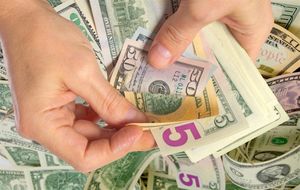
A remarkable discovery made by a Hampshire couple while gardening in 2020 has sent ripples through the numismatic world and highlighted the enduring allure of precious metals. The unearthing of a significant hoard of Tudor gold coins, valued at an estimated £230,000, offers an extraordinary glimpse into 16th-century England and underscores the timeless appeal of tangible wealth during periods of uncertainty. While the initial find occurred several years ago, its ongoing impact on historical understanding, the rare coin market, and public interest in treasure hunting continues to resonate in the financial landscape of late 2025.
The story of the unnamed couple from Milford-on-Sea, within the New Forest district, began during the COVID-19 lockdown. While weeding a flower border, they stumbled upon circular discs in clumps of clay soil. What initially appeared to be mundane objects quickly revealed themselves to be a breathtaking collection of 70 Tudor coins, predominantly gold, dating from the late 15th to the early 16th centuries. The hoard includes coins from the reigns of King Henry VI, Edward IV, Henry VII, and a substantial number from the 1530s during Henry VIII’s tumultuous rule. Many are "angels," gold coins featuring the archangel Michael slaying a dragon. Intriguingly, some coins from Henry VIII's era bear the initials of three of his wives—'K' for Catherine of Aragon, 'A' for Anne Boleyn, and 'I' for Jane Seymour—a rare numismatic detail providing a unique window into the royal court's messaging.
A Glimpse into Tudor Turmoil: The Discovery and Its Context
The collection, initially valued at around £24 in 1540—a sum far exceeding the average annual wage of the time—was likely buried for safekeeping around that year. Experts believe the owner was a person of considerable wealth, possibly a rich merchant or, more probably, a high-ranking church cleric. This period was marked by Henry VIII's Dissolution of the Monasteries, a time of immense social and religious upheaval where many religious institutions attempted to conceal their wealth from the King's commissioners seizing monastic assets. The act of burying such a valuable hoard speaks volumes about the pervasive anxiety and lack of secure banking institutions during an era of profound political and economic instability.
Upon their discovery, the coins were reported to the Portable Antiquities Scheme and the British Museum. Although initially declared as treasure under the UK's Treasure Act 1996, the hoard was later disclaimed and returned to the couple as no museum or institution was able to acquire them during the pandemic's financial constraints. The coins are now slated for individual auction, reportedly in Zurich, Switzerland, where they are expected to fetch between £220,000 and £230,000. This process highlights the complex journey of significant archaeological finds from discovery to market.
Market Implications: Winners and Losers in the Wake of Discovery
The unearthing of such a significant coin hoard creates a ripple effect across several industries, generating both opportunities and challenges. Auction houses stand to be significant beneficiaries, especially those with strong numismatic departments. Major finds like this attract global attention, leading to competitive bidding and often record-breaking prices. These sales generate substantial revenue through commissions and provide invaluable publicity. The expertise required to authenticate, value, and market these rare coins further solidifies the position of established houses in the high-end collectibles market.
Numismatic dealers also experience a boost. The widespread media coverage sparks public interest, drawing new individuals into coin collecting and expanding the customer base. While a large hoard might ease prices for common examples of certain coin types, it also introduces previously rare or lost pieces to the market, creating new inventory opportunities. This renewed interest can also lead to increased overall market activity as collectors seek to acquire related items or diversify their existing collections. However, dealers must navigate potential price volatility and the need for deep expertise to accurately value and market these historical pieces.
In the broader precious metals market, such discoveries reinforce the enduring perception of gold and silver as reliable stores of value. While not directly impacting the supply of bullion, the historical narrative of wealth preservation through physical gold in turbulent times strengthens investor confidence in precious metals as a hedge against inflation and economic uncertainty. Investors in companies like Barrick Gold (NYSE: GOLD) or Newmont (NYSE: NEM), while not directly affected by the coin find, may see a broader positive sentiment towards the underlying commodity. Conversely, challenges can arise from market saturation if an extremely large hoard of a specific coin type is discovered, potentially depressing its value unless demand also skyrockets.
Wider Significance: History, Value, and Regulation
This Tudor coin hoard is historically significant for several reasons. It offers crucial economic insight, suggesting its original owner's wealth and providing a tangible link to the monetary landscape of 16th-century England. The coins with the initials of Henry VIII's wives provide a rare numismatic insight into the King's complex marital history and the coinage reforms of the time, enriching our understanding of royal messaging. Moreover, the timing of the burial around 1540 directly correlates with the turbulent period of the Dissolution of the Monasteries, offering concrete evidence of the anxieties and wealth protection strategies employed during this transformative era.
The discovery powerfully underscores the enduring perception of precious metals as a steadfast store of value. In an age without robust financial institutions, physical gold and silver coins were the most secure form of wealth, immune to political decrees or economic instability. This historical precedent continues to influence modern investment strategies, with gold and silver still regarded as "safe haven" assets during times of crisis.
In the UK, the discovery of such hoards is governed by the Treasure Act 1996. This legislation mandates that finders report any potential treasure—objects over 300 years old made substantially of gold or silver, or significant items over 200 years old regardless of metal—to the local coroner within 14 days. If declared treasure, it legally vests in the Crown, and the finder is obliged to offer it for sale to a museum. If acquired, the finder and landowner receive a tax-exempt reward equal to its market value, as determined by an independent Treasure Valuation Committee. The Portable Antiquities Scheme (PAS), administered by the British Museum, plays a vital role in documenting and studying these finds, ensuring their archaeological context is preserved for public benefit.
What Comes Next: Future Possibilities and Market Dynamics
For the Hampshire couple, the next steps involve the finalization of the auction process for their valuable find. While the initial declaration of treasure was disclaimed, allowing them to retain ownership, the successful sale of the coins will represent a substantial financial windfall. Their experience also serves as a high-profile case study for others who might unearth similar treasures, emphasizing the importance of legal counsel and adherence to reporting procedures.
The event is likely to fuel continued interest in metal detecting and treasure hunting, inspiring more individuals to engage in the hobby. This could lead to an increase in reported finds, potentially expanding our archaeological knowledge, but also raising questions about ethical practices and the preservation of archaeological contexts. Such discoveries also prompt ongoing discussions and potential refinements of treasure laws, as authorities balance finder's rights with the public interest in heritage preservation.
In the numismatic market, the high-profile nature of this and similar finds will likely sustain demand for rare coins, particularly for pieces with historical significance and documented provenance. Collectible coins are increasingly viewed as a tangible asset and a hedge against inflation, attracting both seasoned collectors and new investors seeking diversification beyond traditional financial instruments. For the broader precious metals market, the historical narrative reinforces gold's role as a safe haven, with analysts projecting gold prices to remain high, potentially reaching $3,000 or more per Troy ounce by the end of 2025 due to geopolitical tensions and central bank purchases. Silver is also projected for strong growth, driven by industrial demand and tight supplies.
A Lasting Legacy: History, Wealth, and Investor Vigilance
The discovery of the Tudor coin hoard in a Hampshire garden is more than just a tale of unexpected wealth; it's a powerful reminder of history's tangible presence and the enduring value of precious metals. It significantly enriches our understanding of the Tudor period, offering direct insights into economic conditions, social anxieties, and royal policies through the very currency of the time. The unique coins bearing Henry VIII's wives' initials will forever be a fascinating footnote in numismatic history.
Moving forward, the numismatic market is poised for continued growth, with rare coins increasingly seen as a robust investment class. The public's fascination with treasure hunting, fueled by such high-profile stories, will likely lead to further discoveries, each with the potential to rewrite historical narratives or offer new market opportunities.
Investors should watch for sustained trends in the rare coin market, particularly for pieces with strong provenance and historical significance, as these can offer substantial appreciation. In the broader precious metals sphere, continued geopolitical uncertainty and inflationary pressures are expected to keep gold and silver prices elevated. Monitoring central bank policies, global economic indicators, and ongoing archaeological discoveries will be crucial for those looking to capitalize on both the historical and intrinsic value these ancient treasures represent.
This content is intended for informational purposes only and is not financial advice






